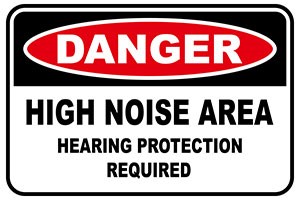Seven Reasons to Protect Your Hearing

Did you know that hearing loss is the third most common chronic physical condition, following only high blood pressure and arthritis? The National Institute for Health (NIH) reports that 30 million people have hearing loss, and this staggering number is growing.
October is Protect Your Hearing Month, a perfect time to assess the noise level of your workplace and remind colleagues about how hearing loss can affect your quality of life.
According to the National Institute for Occupational Safety and Health (NIOSH), hearing loss impacts life in many ways:
- As hearing loss progresses, so does the ability to understand others, which can lead to the feeling of isolation.
- Hearing loss is associated with cognitive decline and heart disease.
- People with hearing loss also may feel a loss of enjoyment, because they aren’t able to hear the sounds that are most dear to them (e.g. favorite music, voices of loved ones).
- Tinnitus, or ringing of the ears, often accompanies hearing loss and can disrupt sleep and concentration.
- Loss of hearing impacts safety at home and at the job.
- People with hearing loss typically earn less than those with normal hearing.
- Hearing loss is associated with depression.
To prevent the consequences of hearing damage, the Occupational Safety and Health Administration (OSHA) requires that loud workplaces implement an effective hearing conservation program that consists of the following five components.
- Noise monitoring: OSHA requires that supervisors monitor work areas to identify employees who are exposed to an 8-hour time-weighted average (TWA) of 85 decibels (dB) or higher. Monitoring records should be maintained and kept for at least 2 years.
- Engineering and administrative controls: If the results of noise monitoring indicate that sound levels are excessive, employers must identify what engineering or environmental changes can be made to reduce noise levels. Engineering adjustments include soundproofing, muffler installation, or building an acoustic barrier. Administratively, a simple scheduling change can make a difference, as employers can opt to operate noisy machines during work shifts in which fewer workers are exposed.
- Audiometric testing: All employees exposed to 85 dB TWA or higher must have a baseline audiogram within 6 months of the first exposure, and every year after that.
- Employee training: Supervisors must conduct annual training sessions on the proper use of hearing protection. Employees should also be trained on the signs and symptoms of hearing loss, including persistent ringing in their ears, difficulty hearing soft sounds, and complaints from their families that he/she repeatedly plays music or TV too loudly.
- Personal protective equipment (PPE): Employees working in areas where noise is 85 dB TWA or higher, must be provided with appropriate hearing protectors, such as ear plugs, ear muffs, and ear canal caps at no cost to them. Safety personnel must offer devices with a sufficient Noise Reduction Rating (NRR). (NRR is the measure, in decibels, of how well a hearing protector reduces noise, as specified by the Environmental Protection Agency.) The higher the number, the greater the noise reduction that’s provided.



